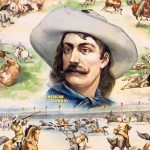
The Game of the People
Build it and they will come
By Lee Pace
Hugh MacRae stood before the Wilmington City Council in the early 1920s with a bold proposal to build a municipal golf course on land his family owned several miles east of the city. MacRae was going to retain the services of Donald Ross, the noted golf architect from Pinehurst, to design the course, but the idea was falling on deaf ears with the city fathers, who would pay for the construction of the course.
“Mr. MacRae, you’re talking pipe dreams,” the mayor told him. “Golf will never be available to the average man. It’s a rich man’s sport.”
MacRae, whose family traces its roots to the Isle of Skye in Scotland, was quick with a rebuttal.
“No, Mr. Mayor, it’s not,” MacRae answered. “I’ve seen golf in Scotland. Almost every course there is a city-owned course. Everyone in the town of St. Andrews plays golf.”
MacRae’s argument worked. The mayor and council conceded his point, approved the plan, and in 1926 Wilmington began construction on its new public layout.
Some 80 years later, MacRae’s grandson smiled considering the story he heard often many years ago.
“Today that golf course plays more than 70,000 rounds a year,” Hugh MacRae II said in 2007. “You can’t have a golf course with much more history than that — ties to St. Andrews and Donald Ross. My father and grandfather were very familiar with golf in Scotland. They foresaw golf becoming very important to the average man, not just the wealthy man.”
Ross’ early ties in American golf were with the affluent — his first job was in 1899 at Oakley Country Club in the Boston suburbs, and a year later he established a base at Pinehurst Country Club — but his Scottish roots allowed him to stay anchored in the idea that anyone could and should have access to quality golf.
“There is no good reason why the label ‘rich man’s game’ should be hung on golf,” Ross wrote at some point before 1914 in a manuscript that was later published in the book Golf Has Never Failed Me. “The development of municipal golf courses is the outstanding feature of the game in America today. It is the greatest step ever taken to make it the game of the people, as it should be. The municipal courses are all moneymakers and big moneymakers. I am naturally conservative, yet I am certain that in a few years we will see golf played much more generally than is even played now.”
Municipal and daily-fee golf courses are important cogs to the golf machinery in the Carolinas. According to the National Golf Foundation, the two Carolinas had 923 regulation courses at the end of 2018, and 659 of them were daily fee or municipal courses. That is just over 70 percent of courses being “public” versus those owned by a private club.
One of the oldest public courses in the Carolinas is Aiken Golf Club, which opened in 1912. The Highland Park Hotel opened in Aiken in the late 1860s, and the golf course was in its amenity package. The course was sold to the town in 1939 when the hotel company encountered financial ruin, and today is run by Jim McNair Jr., son of the noted amateur player James McNair, the winner of the Carolinas Amateur in 1946 and ’48.
The town of Southern Pines commissioned Ross to build a course on ground just south of Morganton Road and east of Broad Street that would be owned and operated by the town, and the original 18 opened in 1913, with nine more following a decade later. The town struggled to maintain the course during the Depression and World War II, and sold the course in the mid-1940s to a Connecticut businessman named Mike Sherman, who dispatched a young accountant and aspiring golfer named Julius Boros to town to keep the books and hone his golf game in his spare time.
Sherman sold the course in 1951 to the Benevolent & Protective Order of Elks, which remains the owner today. The greens were rebuilt by architect John LaFoy in 1998 to accommodate faster putting surfaces, and he added a tee on the 15th hole to lengthen it from a par-4 to a par-5. The course plays 6,354 yards to a par of 71.
“What struck me most about Southern Pines was that you had a really fine layout,” LaFoy says. “It’s just a really, really good layout. It’s outstanding. That’s what Donald Ross did so well — his routings. He used the topography very well.”
Charleston businessman Claudius Bissell Jenkins donated 112 acres to the city of Charleston in the late 1920s to be used for a public golf course. Jenkins and his sons were developing the Riverland Terrace suburb on James Island, just west of the Country Club of Charleston, and saw the civic and commercial appeal of having accessible golf nearby. The Charleston City Golf Course opened in 1929 and has been the site annually for the Charleston City Amateur.
“Its rates are such that young people from families of modest resources, working folk and retirees have access to the game of golf,” Charleston Mayor Joseph P. Riley Jr. said in 2004. “The city’s commitment is that it will always be an affordable and accessible golf course, and I think it’s a very valuable asset.”
The course is set for a $3 million renovation that will begin in December 2019 and encompass fixing drainage problems, reshaping tees, fairways and greens, and removing some trees to promote healthy turf growth. The work will be done nine holes at a time, and the city will pay for it half with recreation bond funds and half with a private fundraising drive.
Ross visited the mountains on the opposite side of the Carolinas to survey the site for a new municipal course east of Asheville in the mid-1920s, and The Asheville Citizen noted the occasion with a large headline: “Municipally Owned Golf Courses Needed Here Says Donald Ross On Arrival.”
“It is the consensus of opinion of almost all that a municipal course will go a long way toward drawing winter and summer tourists,” the story said, then quoted Ross that a new course would “prove one of the chief assets in advertising for visitors.”
Asheville Municipal Golf Course opened a year later and was dedicated on May 21, 1927, and an exhibition four-ball featured trick-shot artist Joe Kirkwood and head pro Ray Cole against the pros at the other two Asheville clubs — Frank Clark of the Country Club of Asheville and George Ayton of Biltmore Forest. It was the state’s first publicly owned golf course.
“The course places Asheville in the ranks of other Southern cities which have provided a modern up-to-date course open to the general public,” The Citizen remarked. “The course is expected to add fully fifty percent to Asheville’s golf population, opening the game to hundreds who know of golf only through the newspaper accounts.”
“It cost one dollar to play golf back then,” says Billy Gardenheight, a caddie at all of the Asheville private clubs in mid-century and an avid golfer himself at the muni. “Guys would come from all over and stay in rooming houses and play golf.”
Today seniors with knee replacements and heart problems show up at 7:30 a.m., five days a week, and walk the front nine, routed in a valley with little topographic undulation. Others go a full 18 and venture onto the back nine, which winds its way up and back down the Beverly Hills subdivision.
“A lot of people come by even though they don’t play golf,” says Cortez Baxter, who has been a starter at the course since 1967. “They play cards, watch TV, tell lies. It’s just a big family. Sometimes you get older and don’t have anywhere regular to go.”
Meanwhile, back in Wilmington, golfers today are enjoying the results of a major renovation that is now five years old. Wilmington Municipal head pro and general manager David Donovan realized that Ross’ original greens had never actually been built, that to save money the town had merely built round circles of sand and clay that were eventually covered with Bermuda grass. He convinced the city to hire architect John Fought to build the green to Ross’ specifications, and that happened in 2014. The $1.4 million project includes new greens complexes, bunkers and putting surfaces on all 18 holes, 24 new/rebuilt tees, some tree removal to improve sunlight and air flow, and the removal/repositioning of cart paths in some areas.
Heralding the results of the project are new tee signs that read at the bottom: A Donald Ross Tradition.
“Now, that fits,” Donovan says. “What we have now I think is true to what Donald Ross envisioned at the beginning.
“I think this has put us on the map now. On Mondays, when the private clubs are closed, we’re getting players from Porter’s Neck, Landfall and Cape Fear. This meets their standards now. That’s a big deal.” PS
Lee Pace has written about the Pinehurst area golf scene for more than 30 years. Write him at leepace7@gmail.com.





